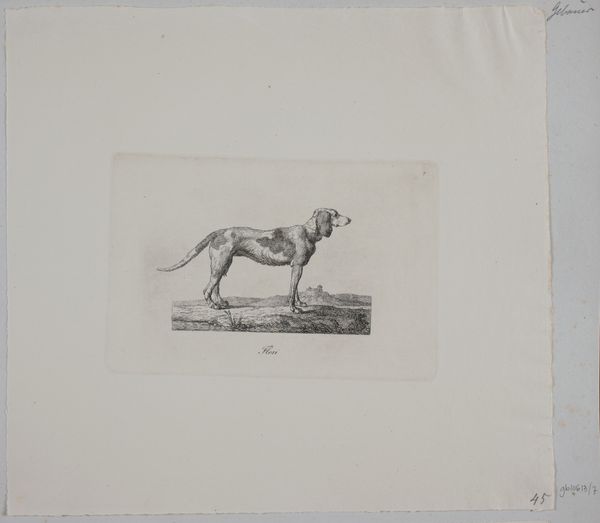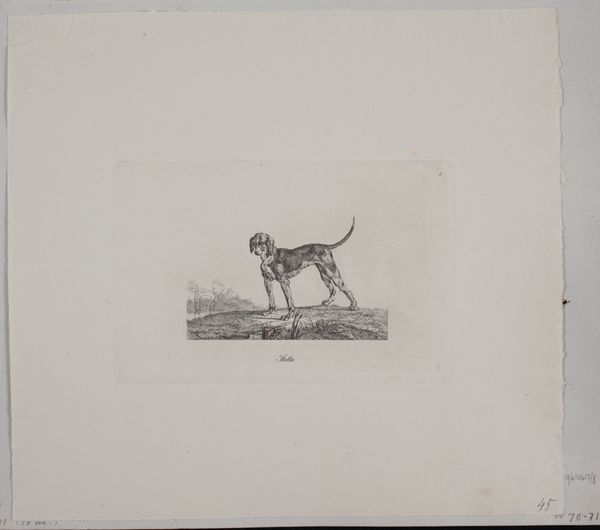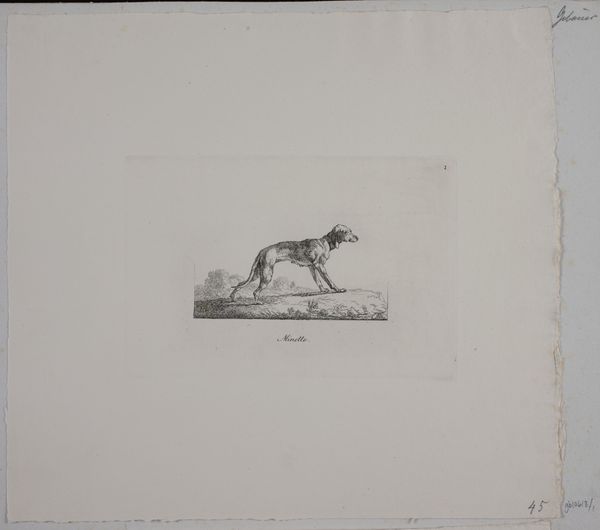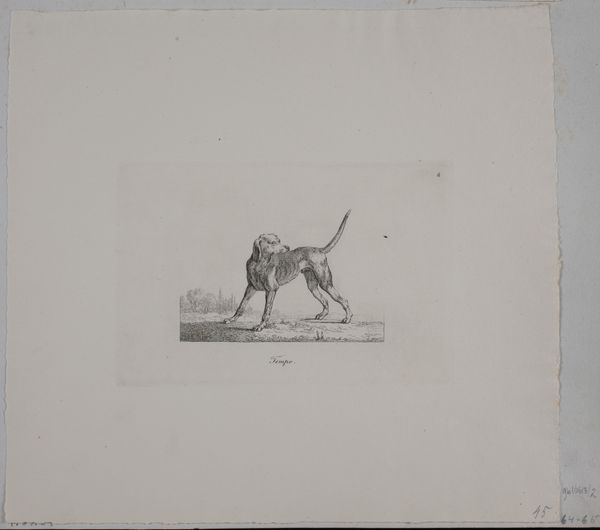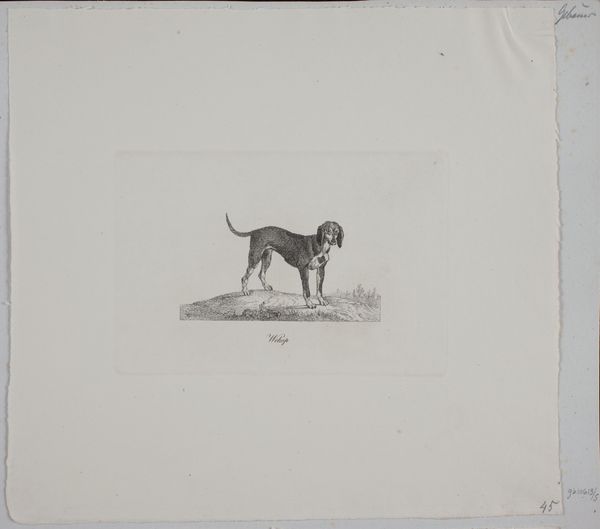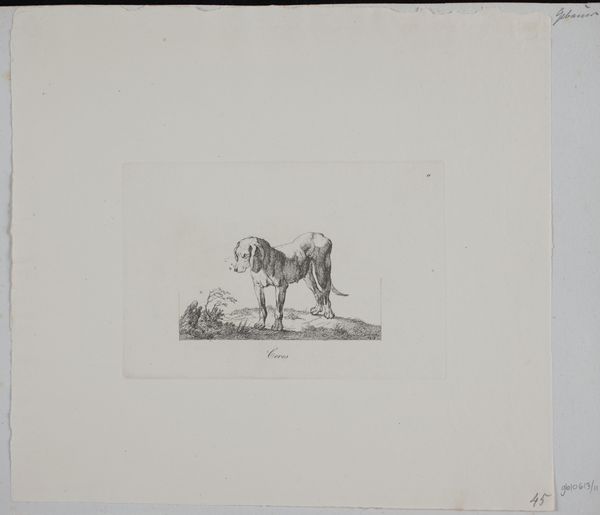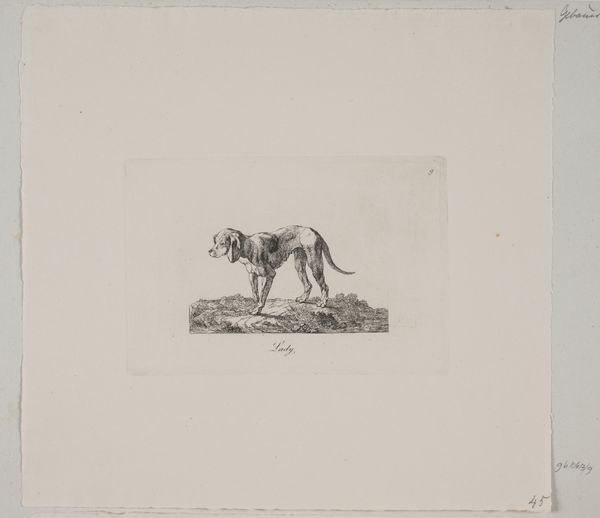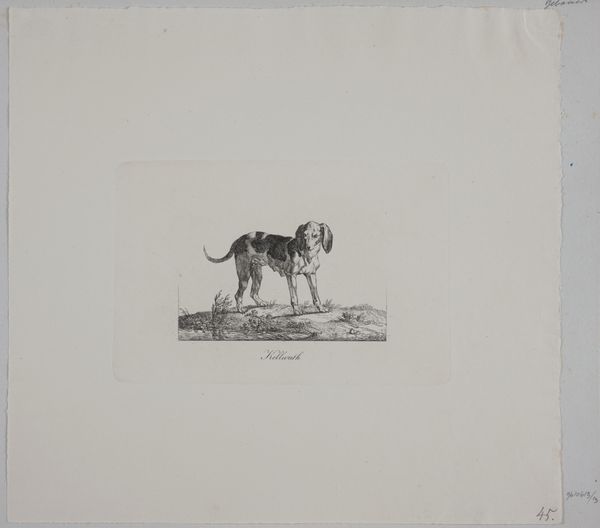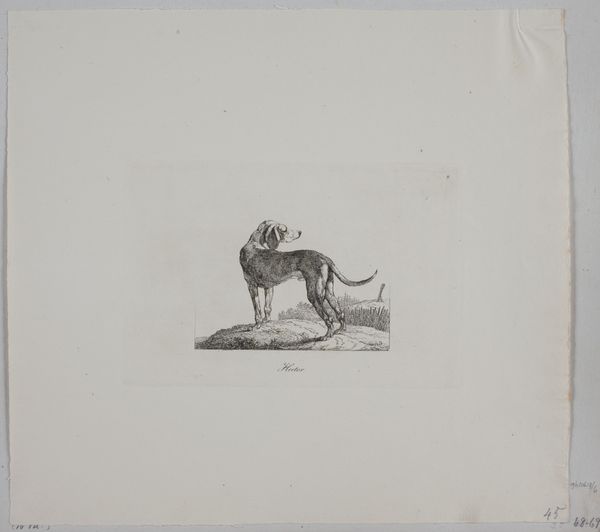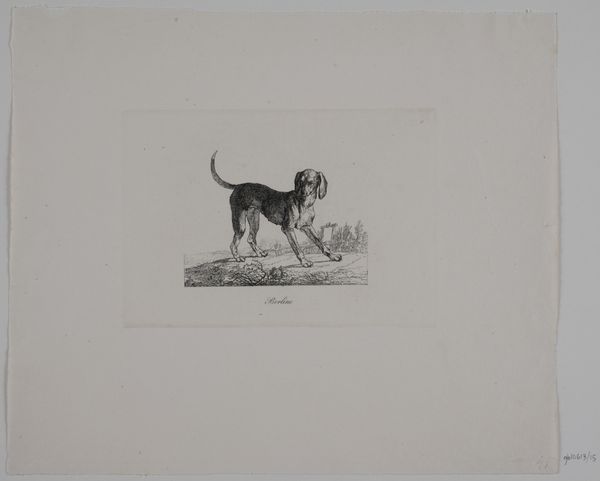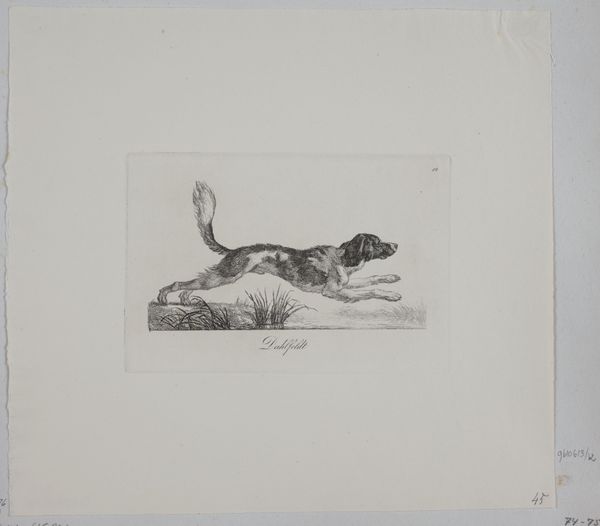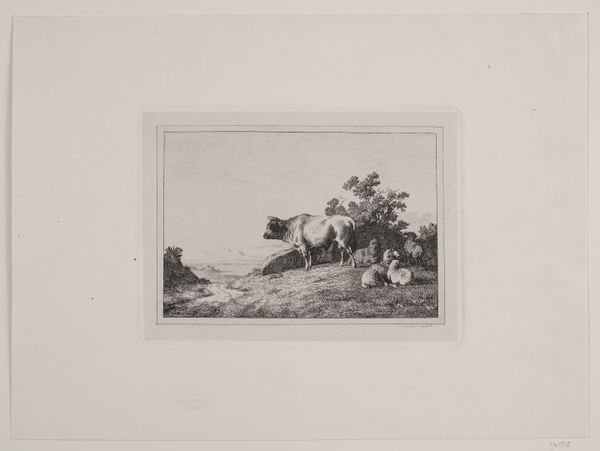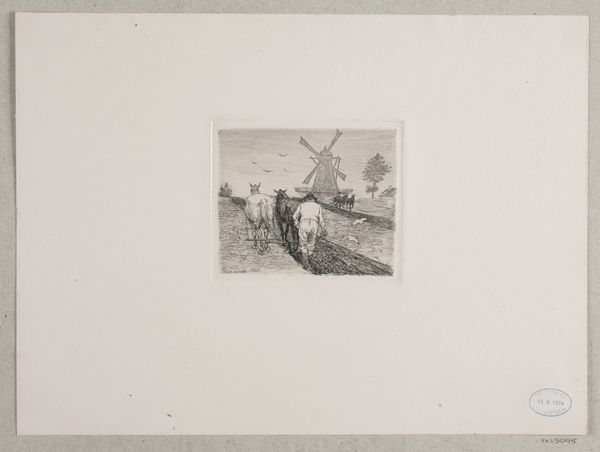
print, engraving
#
animal
# print
#
landscape
#
figuration
#
romanticism
#
engraving
Dimensions: 110 mm (height) x 162 mm (width) (plademaal)
Christian David Gebauer created this print of a dog, titled "Finder," in Denmark during the late 18th or early 19th century. At the time, the dominant artistic institutions, like the Royal Danish Academy of Fine Arts, emphasized neoclassical ideals and history painting. However, Gebauer’s print deviates from this norm. Instead of grand historical narratives, he focuses on a simple, intimate portrayal of an animal. The image creates meaning through its visual codes, referencing the cultural importance of hunting and the relationship between humans and animals. The emphasis on the dog’s keen sense of smell suggests a connection to nature and the practical skills valued in rural life. Prints like these circulated widely in society, and the prevalence of animals in art may indicate a broader shift toward a more sentimental view of nature and domestic life. To fully understand this piece, one might look at popular literature, hunting manuals, and other visual representations of animals from the period to understand how this image participates in broader cultural conversations. We can interpret art far more richly when we consider its social and institutional contexts.
Comments
No comments
Be the first to comment and join the conversation on the ultimate creative platform.
